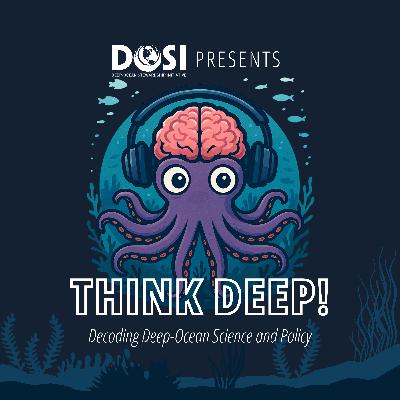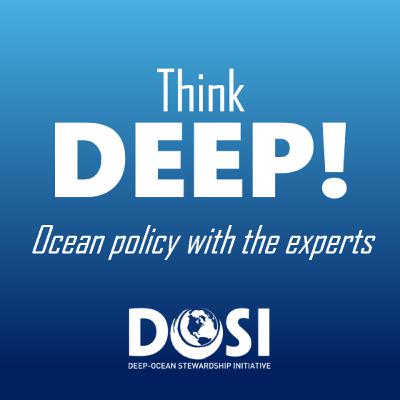The Story of Deep-Ocean Governance
Description
Welcome to the first episode of our new series, and thanks for listening! If you enjoy this episode, be sure to subscribe and leave us a rating.
In this episode, we discover the story behind deep-ocean governance – what this is, how it’s done, and why it matters – with Jon Copley. Jon is a Professor of Ocean Exploration and Science Communication at the University of Southampton and one of our valued Advisory Board members at DOSI. As you’ll hear in this episode, Jon has decades of experience exploring and researching the deep sea, and we’re so grateful to have him on the podcast to share his insightful views on deep-ocean governance with us!
If you’re keen to learn more about some of the topics discussed in this episode, check out the resources below:
- Read more about how connected we are to the deep ocean in our Policy Brief: What does the deep-ocean do for you? Now also available in French and Spanish, with other languages coming soon!
- Check out the UN’s official overview of UNCLOS. This text breaks down the key elements of the treaty, including territorial waters, exclusive economic zones (EEZs), and the responsibilities of nations when it comes to protecting and using ocean resources.
- The UN Oceans and the Law of the Sea page gives a broad overview of how the United Nations works to protect and manage the oceans. This is a helpful starting point for understanding how ocean law fits into international policy and environmental goals.
- In this episode, Jon mentions a large study he was involved in, which investigated how deep-sea communities change across the 6 million square kilometres of seafloor in the Clarion-Clipperton Zone. Check out the full open-access paper to find out more about this research and the importance of the findings for deep-sea mining governance in the region: ‘Carbonate compensation depth drives abyssal biogeography in the northeast Pacific’.
- Jon also talks about his experience on the 2010 research cruise that discovered the world’s deepest hydrothermal vents. Learn more about these Caribbean hydrothermal vents in the related open-access paper: ‘Hydrothermal vent fields and chemosynthetic biota on the world's deepest seafloor spreading centre’.
- Subscribe to our weekly newsletter, the Deep-Sea Round-Up, for all the latest deep-sea research, news and opportunities.
About DOSI:
The Deep-Ocean Stewardship Initiative (DOSI) is a global network of experts working to integrate scientific and humanistic knowledge to inform deep-ocean policy, governance, and stewardship by engaging with policymakers, cultivating capacity and diplomacy, and creating community.
If you work in marine science or governance and are interested in sharing your expertise to inform and support the conservation and sustainable management of the deep ocean, join DOSI today.
Follow us on social media!
Instagram: @deepstewardship
Bluesky: @deepstewardship.bsky.social
Twitter/X: @deepstewardship
Linkedin: Deep-Ocean Stewardship Initiative
Think Deep! is produced by Elin Thomas (Communications Manager) and Michelle Guraieb (Host and Editor), with support from David Benjamin Sound and Eesha Rangani.
Thank you to our funders, Arcadia, Synchronicity Earth, the Benioff Ocean Science Laboratory, and to the University of Southampton for their support.
Music: By the Ocean by Remember The Future
Licensed from PremiumBeat using Standard License #7185897






